When art and math collide
An exhibit of mathematical art reveals the aesthetic side of math
- More than 2 years ago
Mathematics is beautiful: intellectually elegant, exquisitely austere and pretty. Yes, pretty. Like, pretty to look at.
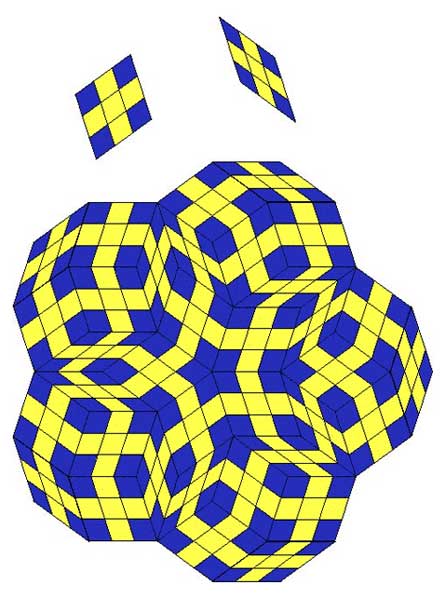
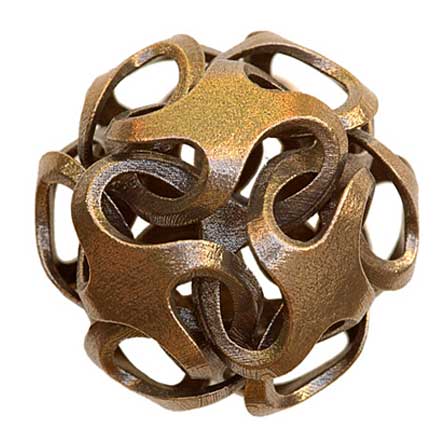
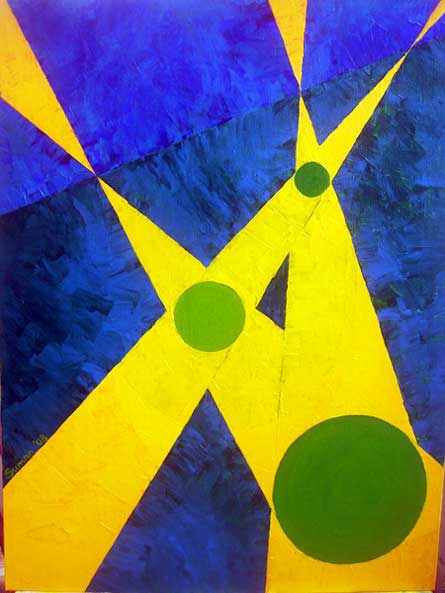
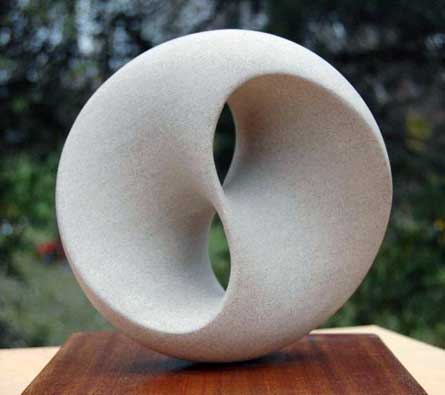

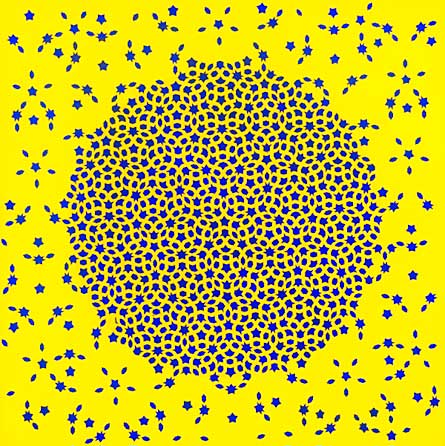
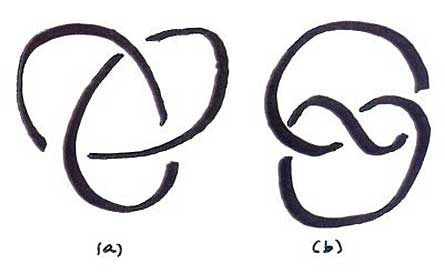
That aesthetic beauty was easy to see at the 2009 Joint Mathematics Meetings in Washington, D.C., January 5–8, which showcased mathematics research and also invited artists and mathematicians to come together to create a display of mathematical art.
Paul Stacy, an Australian landscape architect, got seduced by the beauty of math when a friend brought him some ceramic Penrose tiles. The tiles don’t seem like much at first glance: they can be one of two diamond shapes, either fat or skinny. But these tiles hold a secret. Put together according to certain rules, they form patterns that never, ever repeat, no matter how far you extend them. Even more surprisingly, they have five-fold rotational symmetry, so you can turn the whole pattern 72 degrees and it will look exactly the same.
Stacy started playing with the tiles to make shapes of his own. He put together nine of the skinny tiles to form a yellow cross on a blue background, and then he did the same with nine of the fat tiles. These larger, nine-tile groups were each the same shape as the individual diamond-shaped tiles that made them up, so Stacy used each nine-tile group as a Penrose tile, following the construction rules of Penrose tiles to create a never-repeating pattern.
What emerged was a swarm of groups of blue tiles against a yellow background that seemed to swirl and buzz like a swarm of bees. Stacy discovered that the rules of Penrose tile construction meant there were precisely seven shapes the groups of blue tiles could form. Only long after he finished his piece did he find out that this “discovery” had in fact long been known by mathematicians.
Artist and physicist Vladimir Bulatov builds his artwork like a mathematical proof. He began his Rhombic Dodecahedron I by pondering a funny, irregular looking polyhedron built out of 12 diamond shapes called rhombuses. Bulatov imagined replacing each rhombic face with a sort of four-armed starfish. Instead of connecting the arms directly to those of the closest starfish, he used the symmetries of the polyhedron to interlace the arms, forming an intricate knot.
The symmetries of a rhombic dodecahedron, it turns out, are the same as a cube, even though the two are different shapes. Imagine, for example, holding the cube by putting one finger in the middle of a face and the other in the middle of the face directly opposite; you could then keep your fingers still, spin the cube by 90 degrees and have it line up exactly as it was. Your fingers were on either side of an axis of four-fold symmetry. You could do the same with the rhombic dodecahedron.
Because a cube has three pairs of faces, the cube has three axes of four-fold symmetry — and so does the rhombic dodecahedron. In addition, the cube and the rhombic dodecahedron have four axes of three-fold symmetry (if your fingers are on corners of the cube that are diagonally opposite) and six axes of two-fold symmetry (if your fingers are on edges of the cube that are diagonally opposite).
Mathematically, Bulatov realized, it was possible to twist the faces 90 degrees and weave their arms to meet inside the figure at each of these symmetry points. The question then was: What would it look like?
“I’m a visual person, but I can only rarely imagine my pieces before I make them,” Bulatov says. “I build them like mathematical relationships. For the first time, when I see them on the computer screen, it’s a surprise. I just have to see, does it have aesthetic value?” In this case, the mathematical relationships resulted in an almost magical, twisting, interweaving knot.
Suman Vaze, a high school math teacher in Hong Kong, takes her inspiration directly from mathematical proofs. In Monge’s Theorem, she illustrates one of the more surprising results in geometry. Take three circles on a plane, any three you like as long as they’re different sizes and none is completely inside another. Connect each pair of circles with two lines that both just touch each edge of the two of the circles. Now consider the three points where each of these pairs of lines intersect one another. It turns out that the points will lie on a single straight line.
Vaze found she couldn’t get this theorem out of her head. “It was like a bee in my bonnet,” she says. “I couldn’t shake it off, so I started doodling.” Her doodles reminded her of the Symphony of Lights, the enormous nightly laser show in Hong Kong, which includes lights from 44 buildings on both sides of Victoria Harbor and is orchestrated to symphonic music “It’s out of this world,” she says. She knew this was a theorem she had to capture in a painting.
She also loved the simple proof of the theorem: Imagine each circle with its pair of tangent lines as a slice of a cone. There will be two planes that just touch the three cones, and their intersection will form a straight line. The points where the original lines intersect will also lie in the intersection of the planes, and hence along that same straight line.
Nat Friedman, a retired mathematician at the University at Albany in New York, finds intriguing shapes for his sculptures through mathematics. Some of the most profound questions in math concern the most humdrum, everyday objects, like knots and soap bubbles. Friedman combined these by twisting wire to form the simplest knot there is — an overhand knot mathematicians call a trefoil — and then dipping it into soapy water. A film formed across the wire, and he then carved this shape out of limestone. Viewed from some angles, it looks a bit like a yin-yang symbol.
Mathematical art started for Friedman as a side amusement from his mathematical work, but it has come to be a central part of his life. Art, he believes, should be far more central in education. “Learning to see is fundamental to both art and mathematics,” he says. “Whole new worlds open up when you can see better.”






